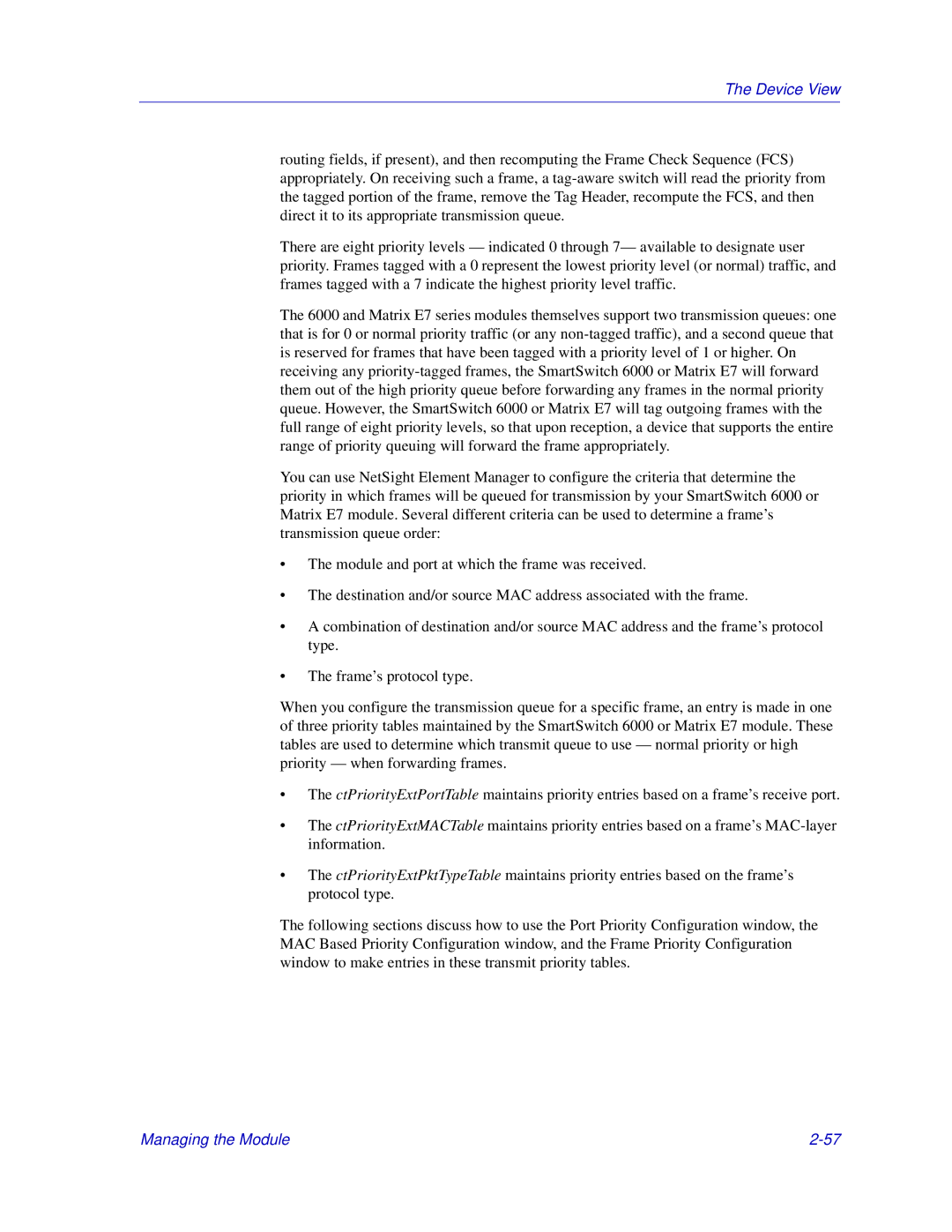The Device View
routing fields, if present), and then recomputing the Frame Check Sequence (FCS) appropriately. On receiving such a frame, a
There are eight priority levels — indicated 0 through 7— available to designate user priority. Frames tagged with a 0 represent the lowest priority level (or normal) traffic, and frames tagged with a 7 indicate the highest priority level traffic.
The 6000 and Matrix E7 series modules themselves support two transmission queues: one that is for 0 or normal priority traffic (or any
You can use NetSight Element Manager to configure the criteria that determine the priority in which frames will be queued for transmission by your SmartSwitch 6000 or Matrix E7 module. Several different criteria can be used to determine a frame’s transmission queue order:
•The module and port at which the frame was received.
•The destination and/or source MAC address associated with the frame.
•A combination of destination and/or source MAC address and the frame’s protocol type.
•The frame’s protocol type.
When you configure the transmission queue for a specific frame, an entry is made in one of three priority tables maintained by the SmartSwitch 6000 or Matrix E7 module. These tables are used to determine which transmit queue to use — normal priority or high priority — when forwarding frames.
•The ctPriorityExtPortTable maintains priority entries based on a frame’s receive port.
•The ctPriorityExtMACTable maintains priority entries based on a frame’s
•The ctPriorityExtPktTypeTable maintains priority entries based on the frame’s protocol type.
The following sections discuss how to use the Port Priority Configuration window, the MAC Based Priority Configuration window, and the Frame Priority Configuration window to make entries in these transmit priority tables.
Managing the Module |
